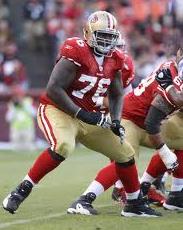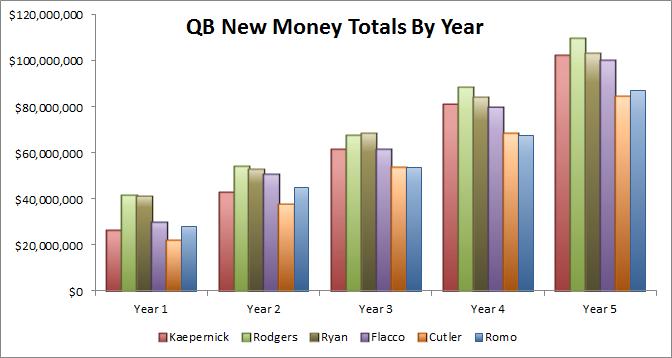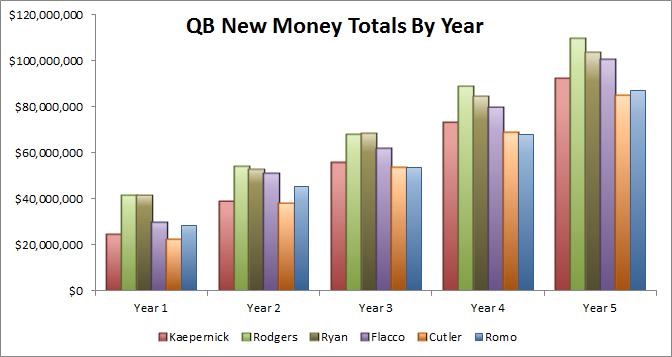[adsenseyu1]
Examining the best and worst from the NFC runner up San Francisco 49ers
Best Contract: Anthony Davis
The 49ers are one of the more difficult teams to select the best deal on, not because there are so few, but because there are so many. For years San Francisco was the best run front office in the NFL and in many ways that continues to this day. The 49ers are always proactive with their contracts and with using salary cap space.
Last year I named Joe Staley as the best contracts on the team, but there were recently some changes to his contract that kind of changed my thinking on him. The largest benefit of the Staley contract was the absence of prorated money in the contract to go along with low salary charges. While the charges are still low compared to others at the position, it now becomes more difficult to move on in the future, as soon as the first option year is exercised. I think its still a good deal and it avoids any possible holdout issues in the future but in the end it was enough of a change to make me go with Anthony Davis as the best deal on the team.
Davis had signed a contract extension with the 49ers in 2013, coming off a season when he was probably regarded as one of the top two or three right tackles in the NFL. This was another of those proactive extensions by the 49ers in which they signed a player with multiple years remaining on his current contract to try to get the best terms and structure possible in the deal. Davis would get locked up at $6.5 million a season all the way through 2019.
While that may not sound like the best contract in the world, since he is the second highest paid right tackle in the NFL, the way they get to that figure is what lands him there. The 49ers paid Davis $7.5 million in a signing bonus, which was, for the most part, the only truly guaranteed portion of the contract. That figure on a yearly basis or percentage of contract guaranteed ranks around 10th. All his other guarantees don’t kick in until April 1 of the season in question, giving the 49ers ample time to move on.
Davis has millions of dollars tied into health, participation, and motivation. In each year of the contract Davis has $1 million in roster bonuses that are paid out for each game in which he is healthy enough to play. That’s around 15% of the contractual value. His base salary can de-escalate by $1.25 million if he fails to participate in workouts during the offseason or is not motivated enough to keep at his healthy playing weight. While such bonuses are not out of the ordinary for linemen, they are not ordinary at this amount. This is around 19% of the contract value.
So you are looking at a player who has over 1/3 of the contract potentially as risk with dead money charges such that he could be released at anytime after the 2015 season without too much worry. His cap charges are more or less steady in the $6 million range so that he’ll never really burden the teams’ salary cap. These types of deals will almost always get the best value out of a player with the threat of a paycut or release always hanging over the head of the player.
[adsenseyu2]
Worst Contract: Anquan Boldin
This was an easy one for me to select as Anquan Boldin’s contract sticks out like a sore thumb on the roster. It has nothing to do with the quality of player that Boldin has been, but the type of contract that they signed him to. San Francisco’s usual MO is to craft relatively salary cap friendly and team friendly contracts. Twice we have recently seen them do that with important veteran players when they worked out contracts for running back Frank Gore and defensive end Justin Smith. I just don’t see any of the same with Boldin, especially in the roster bonus category where he only has $500,000 per year tied to being active. The others had at least three times that much tied to being active.
The pricing point they used for Boldin was that of Wes Welker at $6M a year, except Boldin is two years older than Welker was at the time he signed his contract. Welker had also been the more productive player, albeit on a very different offense than Boldin had played with in Baltimore for most of the past few years, leading into his contract. Boldin had a terrific year in 2013 with San Francisco, but with the expectation of a healthy Michael Crabtree, expecting similar numbers would not have seemed logical and that was before they traded for Steve Johnson to take away targets as well.
The big reason this one stands out, though, is the fact that they had to resort to the voidable year clause to make the contract work within the confines of their salary cap. These are techniques that maybe would have been associated with the 49ers over 15 years ago, but not today. I guess it was the only way they felt they could keep him under the salary cap this season without hassle. So now they are locked into either a $6.9 million active cap charge in 2015 or a $3.6M dead cap charge. If he plays out the two year contract he still leaves the team with $2.7M on the cap in 2016.
While this is nowhere near as bad as other teams’ worst contracts, this is still a deal where the 49ers could have gotten a stronger contract if they waited him out a bit longer and getting the best deal possible is something many of us have grown to expect from this organization.
2013’s Best and Worst 49ersContracts:
2013 Best Contract: Joe Staley (Received extension with 49ers)
2013 Worst Contract: Carlos Rogers (Released)
Click Here to Check out OTC’s other Best and Worst Contracts from around the NFL!
[adsenseyu2]
[adsenseyu4]
[subscribe2]





